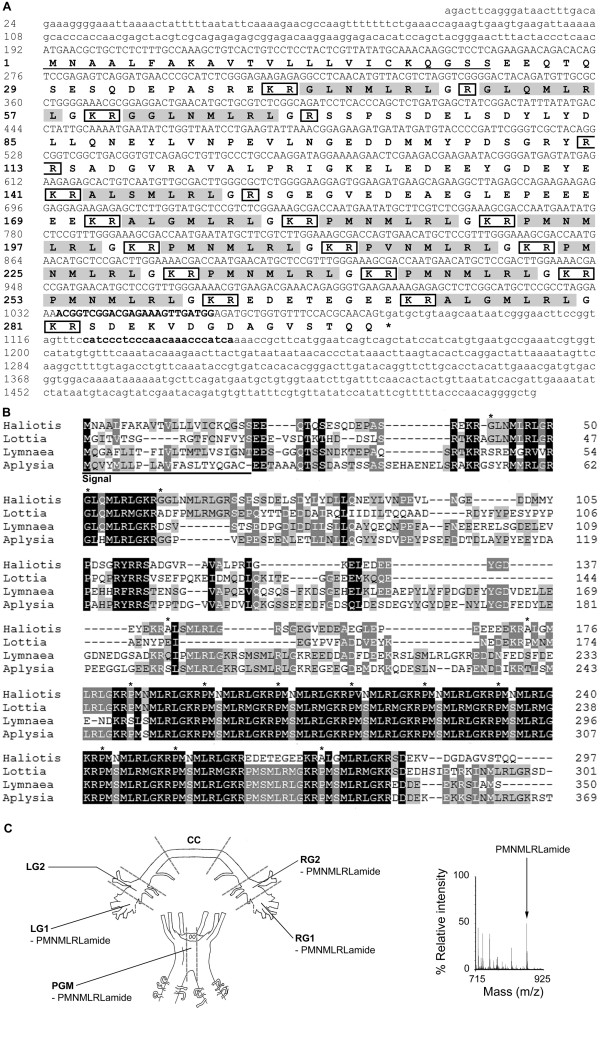Figure 2.
Characterisation of Has-Myomodulin . (A) Nucleotide and predicted amino acid sequence of Has-Myomodulin (nucleotide and amino acids are numbered on left). A predicted signal sequence is underlined and predicted monobasic and dibasic cleavage sites are boxed. Predicted myomodulins cleaved from the precursor are shaded. Has-Myomodulin qPCR primers described in Table 1 correspond to nucleotides 1034–1057 and 1122–1144, here shown in bold. (B) Multiple sequence alignment of molluscan myomodulin prepropeptide sequences. Shading is to 4 levels, and indicates conservation as described in Nicholas et al. (1997) [33]. Asterisks indicate the start of H. asinina myomodulins. HaliotisH. asinina [GenBank:JN606062]; LottiaLottia gigantea (Joint Genome Institute, Protein ID 159404); LymnaeaLymnaea stagnalis ([GenBank:X96933]; [39]); AplysiaA. californica ([GenBank:S64300], [38]). The C-terminal Q has been removed from the Aplysia sequence. (C) Schematic representation of H. asinina anterior ganglia showing regions analysed by MALDI-TOF-MS. Identification by MALDI-TOF-MS of the most commonly encoded myomodulin PMNMLRLamide in regions of H. asinina anterior ganglia. Peak shown is representative of PMNMLRLamide (m/z 872.9) (right). Signal, signal sequence; LG1, left cerebral ganglia region 1; LG2, left cerebral ganglia 2; RG1, right cerebral ganglia 1; RG2, right cerebral ganglia 2; CC, cerebral commissure; PGM, pleuropedal ganglia middle; amide, amidation; m/z, mass to charge ratio.

